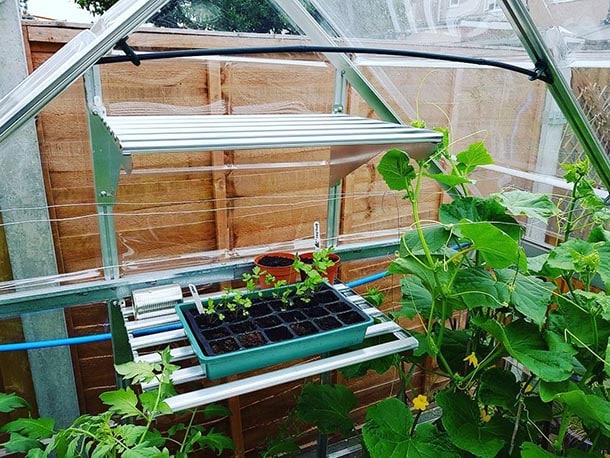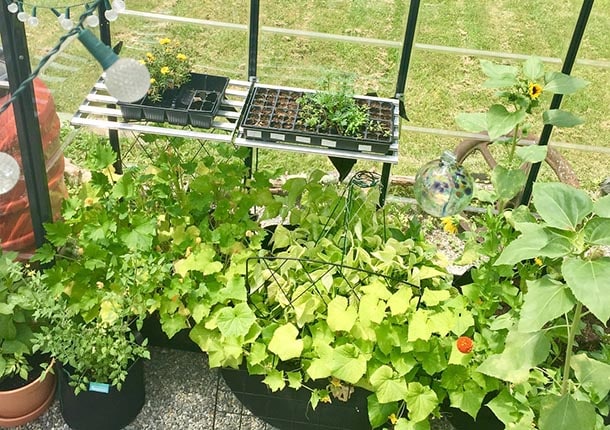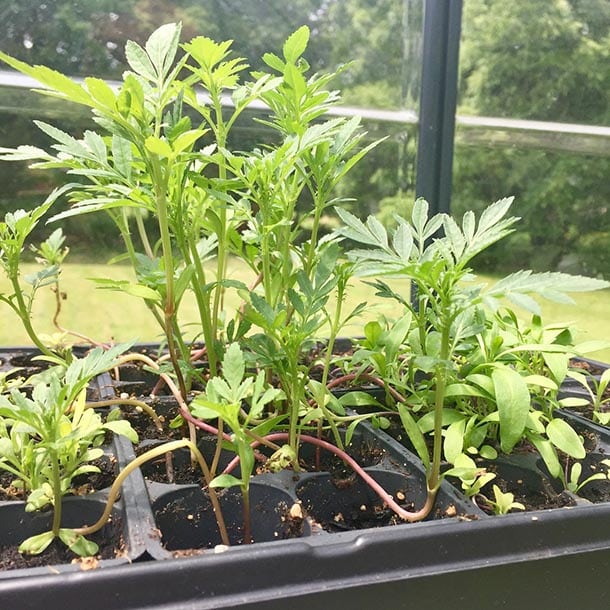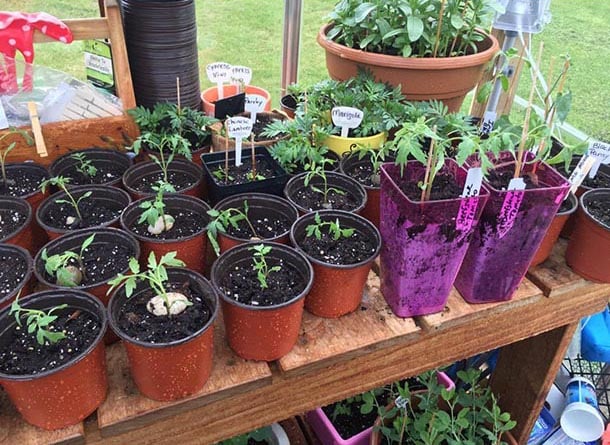
6 STEPS HOW TO BUILD A GREENHOUSE
Thinking about how to build your own greenhouse? There are a few things you want to take into consideration.
In the outdoors, seeds and plants are subject to constantly changing weather conditions and temperatures. Growing them in a greenhouse allows you to control every element in the plant’s environment. A greenhouse allows you to sow seeds at almost any time of year, depending on the winter temperatures in your climate zone. Later on, greenhouse-grown flowers, fruits and vegetables can be prepared (hardened off) for easy transition to your garden.

After deciding what plants you intend to grow, you can order specific seeds accordingly.
You have the liberty to choose special seeds, for example organic non-GMO seeds.
Follow the planting directions carefully with attention to details such as temperature,
planting depth, and extended care.
Precautions: To prevent your seedlings from experiencing fungal disease, which can
weaken and kill them soon after germination, use sterile seed-starting trays and soil.
To further keep your greenhouse sanitary, you can regularly disinfect it with diluted bleach.
Soak large seeds, such as beans or tree seeds, in a bowl of warm water overnight before planting them.
Fill seed-starting trays with moist potting soil. Sow one large seed per tray cell. If the seeds are very small, pinch a few between your thumb and forefinger. Spread them across the surface of the soil and tamp them down with your fingers. Sprinkle a very thin layer of sphagnum moss or vermiculite over the surface of the soil, if desired. Do not do this, however, when your seeds need light to germinate. Examples include petunia and lettuce seeds, as well as many small herb seeds.

Mist the surface of the soil with a spray bottle. When seeds require high humidity or constant moisture, put the tray in a clear plastic bag until germination occurs.
Put seed trays on a heating mat to encourage faster germination. Ideally, use a mat with a thermostat so the soil does not get too hot. Many seeds prefer a soil temperature between 70 and 85 degrees Fahrenheit.
Provide water as necessary to keep the soil moist before germination and during the seedling stage.
Dilute seedlings to one healthy plant per tray cell. When seedlings have at least two true leaves, transplant them into larger individual containers.

Maintaining heat in winter: It is important to keep greenhouse temperatures around 10°C (50°F) at night and around 21°C (70°F) in the daytime.
You can use a heater when necessary to raise the temperature; provide additional ventilation by opening a window or door.
Maintaining illumination: Put seed trays under hanging fluorescent lights when your greenhouse receives less than 16 hours of sun per day. Keep the lights about 6 inches above the trays.
Maintain air flow: Spread out the containers in the greenhouse.
Avoid pushing containers close together. Doing so prevents adequate air flow.
Keep a fan blowing gently at all times to simulate the wind that normally helps plants grow thick, strong stems.
Fertilize: Give seedlings a half-strength application of all-purpose, soluble fertilizer when the first true leaves appear.
Plan to sow seeds in your greenhouse at any time of the year. When you want to transplant your seedlings into the garden in spring, sow seeds in the greenhouse about six to eight weeks before your area’s last frost date.
Begin hardening off plants two weeks before transition to the garden, in early spring or after last frost date in your climatic zone. Move the plants outside to a shady spot for several hours each day. Gradually increase the hours per day the plant spends outside over the two-week period. Transplant the plants into their permanent locations in the garden when hardening off is complete. Some plants do not transplant well, such as melon, cucumber and dill. Consider sowing these seeds directly in the garden or in a large container in the greenhouse.
